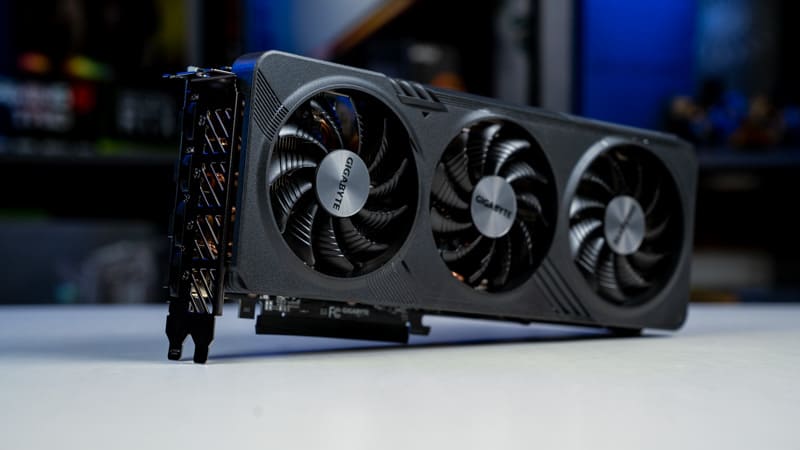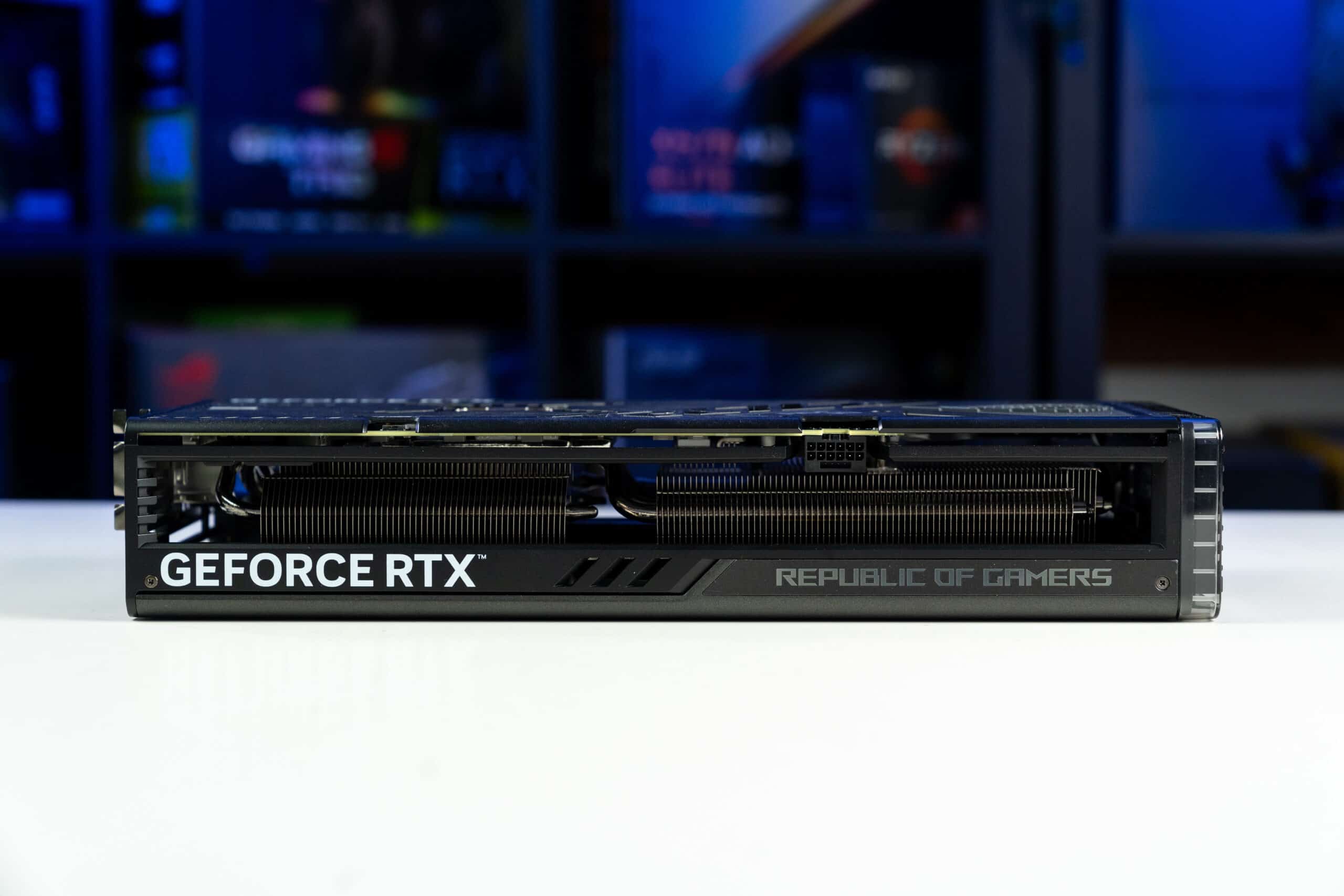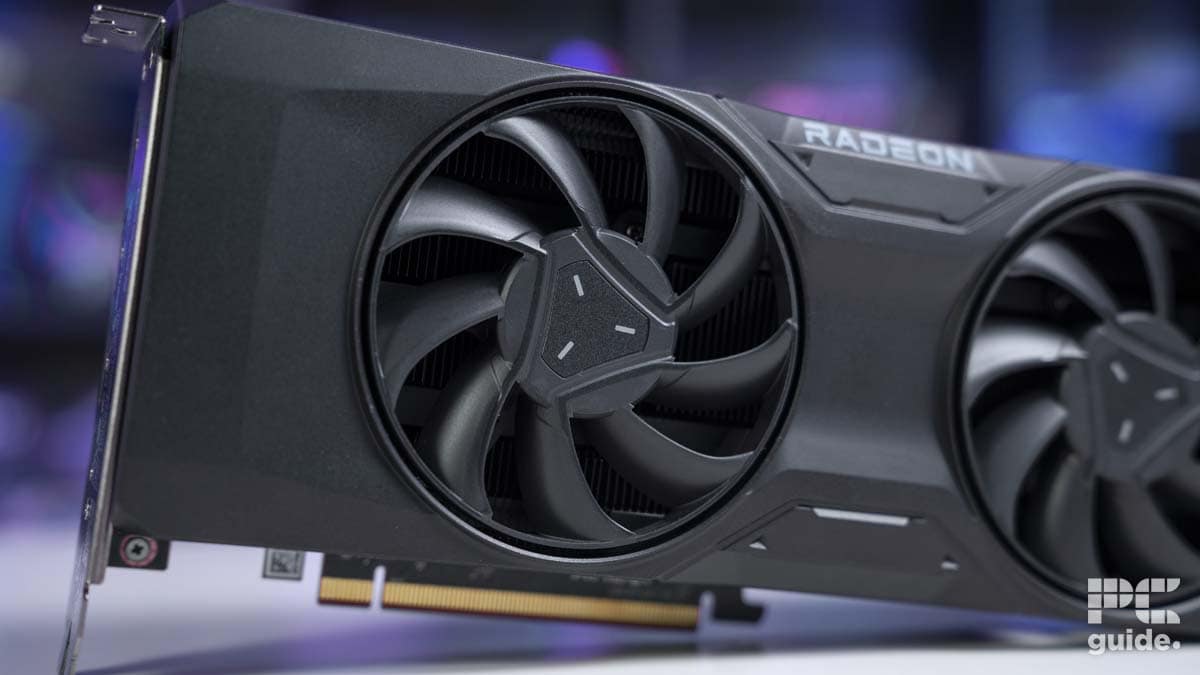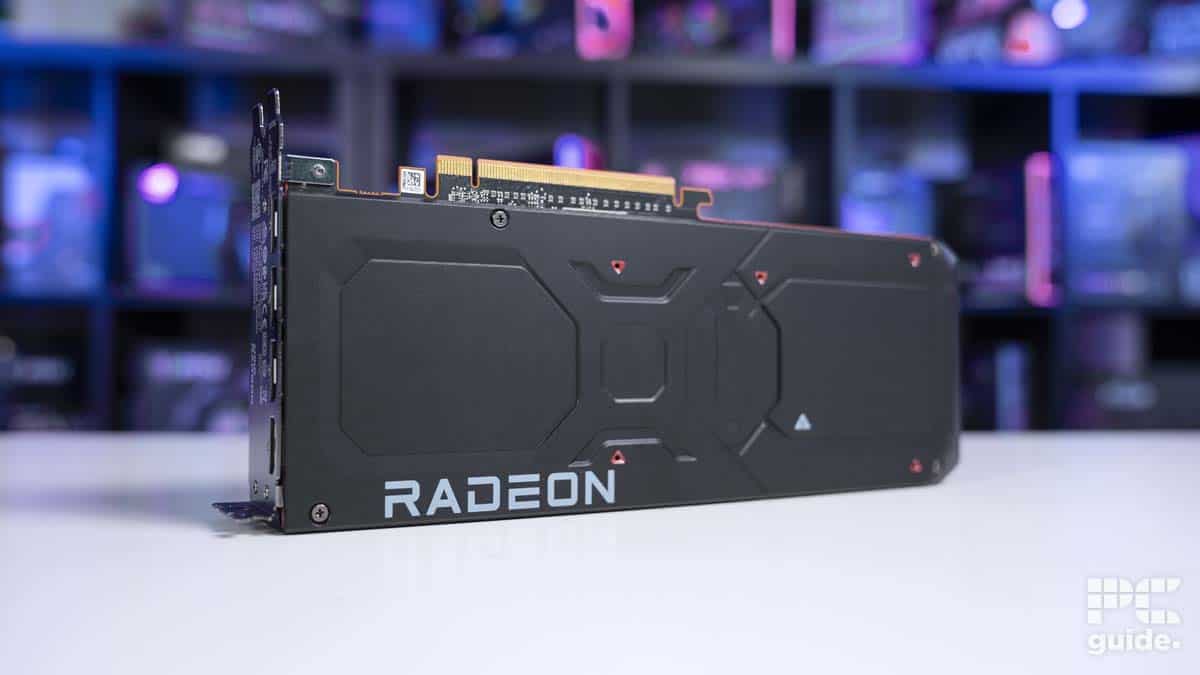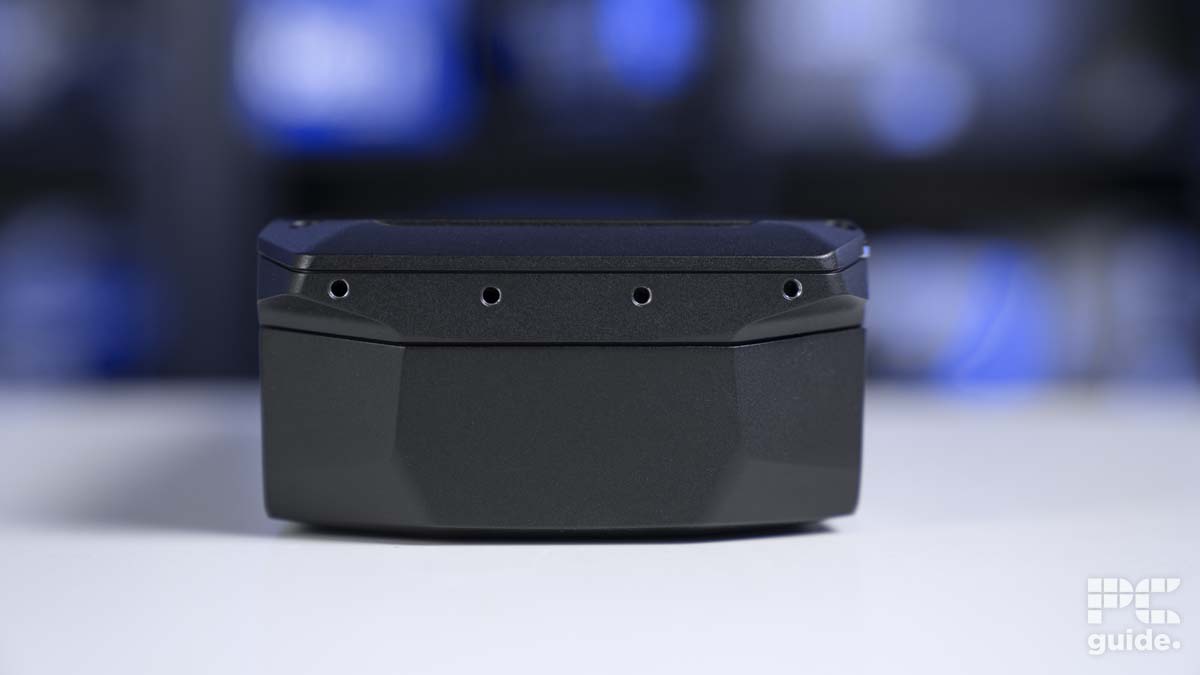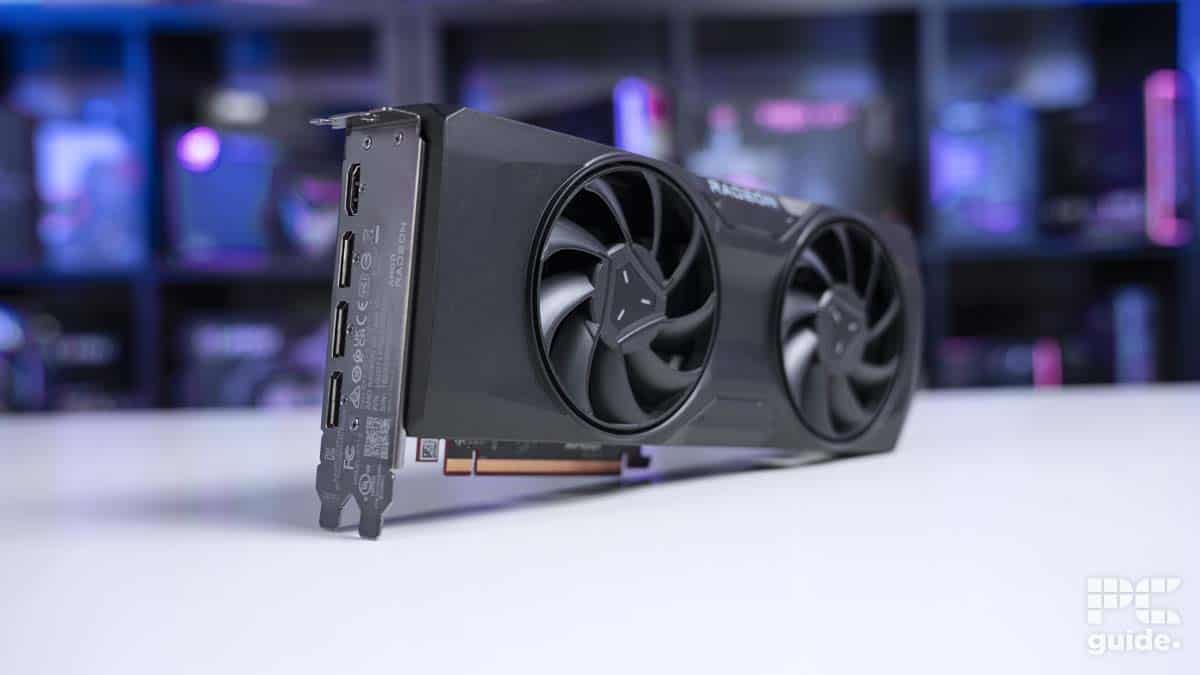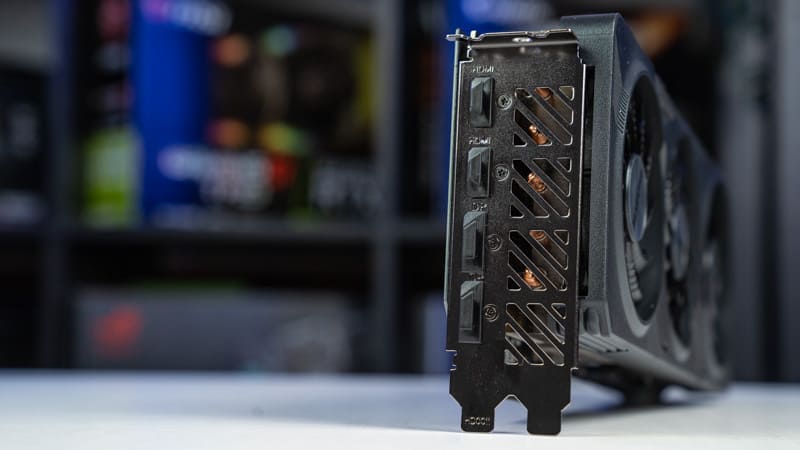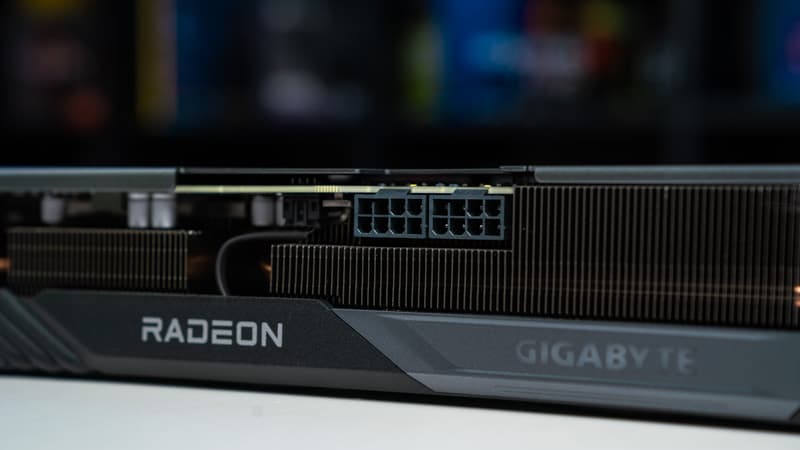Best GPU for Core i5-14600K in 2025 – our top picks

Table of Contents
The Intel i5 14th-generation CPUs offer a powerful and affordable solution for your gaming needs. Capable of handling the majority of the latest GPUs, the question arises: which GPU should you pair it with? There isn't a direct answer to this, as there are multiple factors to consider, such as budget, usage, and more.
So, to that end, we've put together this in-depth guide, which lists different options, their details, and the pros and cons of each to help you make an informed decision.
Products at a glance
-
Best GPU for Core i5-14600K
ASUS ROG Strix GeForce RTX 4070 Ti Super OC Edition
-
Best AMD GPU for Core i5-14600K
AMD Radeon RX 7800 XT
- GPU: Navi 32
- Stream Processors: 3,840
- VRAM: 16 GDDR6
- Memory bus width: 256-bit
- Bandwidth: 624.1 GB/sec
- Base clock speed: 1,295 MHz
-
Best 4K GPU for Core i5-14600K
ASUS TUF Gaming GeForce RTX 4080
- GPU: AD103
- CUDA Cores: 9728
- VRAM: 16GB GDDR6X
- Bandwidth: 716.8 GB/s
- Memory bus width: 256-bit
- Base clock speed: 2205 MHz
-
Best budget GPU for Core i5-14600K
Gigabyte Radeon RX 7600 XT OC
- GPU: Navi 33
- Stream Processors: 2,048
- VRAM: 16GB GDDR6
- Bandwidth: 288.0 GB/s
- Memory bus width: 128-bit
- Base clock speed: 2029 MHz
How we picked
We researched the market and found various options from Nvidia and AMD. We filtered those options based on their price, compatibility, performance, and other features, such as DLSS and FSR. On top of that, we also conduct rigorous in-house testing of the cards. This gives us insight into how they'll perform, and we can help you pair them with various CPUs, including an i5-14600K. We're always updating our list with the latest information, so if there are better pairings than these, we'll be sure to update them, so check back with us.


- GPU: AD103
- CUDA Cores: 8,448
- VRAM: 16GB GDDR6X
- Bandwidth: 672.3 GB/s
- Memory bus width: 256-bit
- Base clock speed: 2340 MHz
- Boost clock speed: 2670 MHz
- Great 1440p performance
- Decent framerates at 4K
- Can be overclocked
- Good cooling system
- Large and bulky model
- The ROG Strix model is pricey
If you want the absolute best GPU for your Core i5-14600K build, then we think that the RTX 4070 Ti Super is a good choice. The RTX 4070 Ti Super was released earlier in 2025 in the second round of the RTX 40-series releases. You can consider this an ‘upper mid-range' card that can handle 1440p gaming comfortably.
Coming to specs, the card features 8,448 CUDA cores, 16GB GDDR6X VRAM, along with a 256-bit memory bus – all of which point towards powerful and speedy performance. Plus, the Asus ROG Strix model that we have reviewed and selected for this list offers a 2340 MHz base clock speed and 2670 MHz boost clock speed, which means you can overclock it.
Overall, in terms of performance, the Ti Super variant sits between the RTX 4070 base model and the RTX 4080 range.
PC Guide
In our review of the RTX 4070 Ti Super, we found out that the card could handle 1440p as well as 4K gaming – except for really heavy 4K gaming. To give you a better idea, we played Assassin's Creed Mirage in 4K and got 84 FPS. However, the framerates dropped to 44 FPS when we played Cyberpunk 2077 in 4K.
Overall, in terms of performance, the Ti Super variant sits between the RTX 4070 base model and the RTX 4080 range. The only ‘con' here is that the Asus ROG Strix model is large and heavy, which might not be suitable for compact builds.
What users say
On Amazon, the Asus ROG Strix RTX 4070 Ti Super has a rating of 4.7, and more than 1,000 people have rated the product. As per the reviews, most customers were satisfied with the product – they said that it's well worth the money, looks good, and delivers good performance.
“Just built my big gaming pc I play alot of different games and I like them looking good with no hesitation this was the perfect gpu for my build,” one of the customers said in a review. However, note that a few users complained that the card was big – so make sure you have a big enough PC case.

- GPU: Navi 32
- Stream Processors: 3,840
- VRAM: 16 GDDR6
- Memory bus width: 256-bit
- Bandwidth: 624.1 GB/sec
- Base clock speed: 1,295 MHz
- It costs less than the RTX 4070
- Delivers excellent 1440p results at high settings
- Offers a better balance between performance and value
- Not great for Ray Tracing
- Handling 4K gaming with maxed-out settings might be too much for this card
- High power draw means it'll need adequate cooling solutions
If you're a fan of Team Red and are looking for the best GPU for i5-14600K, we recommend you pair it with the RX 7800 XT for the ideal performance. For starters, this GPU has 3,840 stream processors, a 2,124 MHz game frequency, and a 2,430 MHz boost frequency. These specifications mean this GPU should deliver great results at 1080p and 1440p. As far as 4K is concerned, its performance may be lacking, and framerates might drop below the playable 60 FPS in some titles.
According to AMD, you should get a significant boost in performance by enabling FSR 3. In titles like Forspoke, they showcased an increase from 50 FPS to 175 FPs with FSR 3 Performance Mode and Frame Generation. So, even if the hardware falls a bit short, the software capabilities of this GPU should ensure a smooth gameplay experience at high resolutions.
The RX 7800 XT also features 16GB of GDDR6 memory with a 256-bit memory interface. This is 4GB more than our top pick and should let you max out the in-game settings without sacrificing performance. However, the difference is shown in the memory speed, as GDDR6 tops out at 16 GT/s, whereas GDDR6X falls between the 19-21 GT/s mark.
To make up for this, AMD introduced the AMD Infinity Cache Technology. This new cache level is visible for the entire graphics core and holds frequently used data on the GPU memory. This enables virtually instantaneous data calls, reducing access time and system memory bottlenecks and faster and more efficient processing.
The RX 7800 XT leads in terms of 1440p gaming for its price point with 60fps or above natively.
PC Guide
As for connectivity options, this GPU has one HDMI and three Display ports. This should be enough to connect a single or multiple monitors simultaneously, whether for gaming or productivity reasons. On top of that, the HDMI supports 4K, so if you have a 4K monitor, this GPU should work well with it.
Sporting dimensions of 267mm L x 111mm W x 50mm H, this GPU will need a good amount of space to be installed onto the motherboard. If you don't have adequate space, forcing it to fit isn't recommended, as it could damage the GPU or other components. Also, components cramped together can lead to restricted airflow. In this case, upgrading your casing is the way to go, and we've got your back with our best open-air PC case guide.
This will also help manage the heat generated by the RX 7800 XT, as it has a typical board power of 263W, as claimed by AMD. That said, this number can go up depending on the workload or go down if the GPU isn't being used a lot. Overall, the RX 7800 XT is a solid card for 2K gaming and should be able to cater to 4K gaming on some titles.
What users say
According to Amazon reviews, the RX 7800 XT has great performance and one reviewer stated: “Able to get 4K/60 on most games (but not all—so be aware). 7800 XT is probably the best bang for your buck card this generation.” This is perfectly in line with our findings, but the results shouldn't disappoint you if you plan on getting your hands on this card.

- GPU: AD103
- CUDA Cores: 9728
- VRAM: 16GB GDDR6X
- Bandwidth: 716.8 GB/s
- Memory bus width: 256-bit
- Base clock speed: 2205 MHz
- Boost clock speed: 2505 MHz (OC Mode: 2535 MHz)
- Excellent 4K performance
- DLSS 3.0 and Reflex offer a competitive edge in gaming
- Great for Ray Tracing
- Has a big footprint and requires a full tower casing to hold it
- RTX 4080 Super costs less and has better performance
- Overkill for non-4K gaming needs
Were you on the hunt for the best GPU for i5-14600K but want a card from Team Green? The RTX 4080 won't disappoint. We can say this with surety, as in our RTX 4080 review, it had great results in gaming and other tasks. For starters, this GPU has 9,728 CUDA cores, a base clock of 2.21 GHz, and a boost clock of 2.51 GHz. What this means is that it’s packing enough firepower to handle anything you throw at it with a smile on its face.
It also features 16 GB of GDDR6X memory with a 256-bit memory interface width. This means you should have enough VRAM to play around with and adjust the in-game settings as you please. The 256-bit memory interface should also enable smooth data transfer, improving overall performance.
The RTX 4080 has one HDMI 2.1a and three 1.4a Display ports. So, if you want to set up multiple monitors on your desktop, this card should provide more than enough connectivity options. Nvidia claims this card can support four 4K monitors at 120 Hz or two 4K 240 Hz displays. While this card performed well in 4K gaming during our testing, gaming on multiple 4K monitors and getting decent frames will most likely be very difficult. However, if it’s only for casual use, the RTX 4080 should be able to deliver on that claim.
The RTX 4080 generally performs favorably in 4K in top-tier gaming titles with few issues to speak of.
PC Guide
The RTX 4080 also uses Nvidia technologies like Nvidia DLSS. These work to improve in-game performance through Frame Generation, Ray Reconstruction, Super Resolution, and more. Frame Generation leverages AI capabilities to create more frames, which boosts the FPS, resulting in smoother gameplay.
This GPU has a dimension of 304mm in length and 137mm in width. This makes it larger than the RTX 4070 and the RX 7800 XT. So, it'll require plenty of space to be mounted on the motherboard. However, if you find yourself with a casing that can't hold it, we've covered you with our best full tower case guide with the top picks.
What users say
According to Amazon reviews, this card is a “monster” capable of handling every game without a hitch. One reviewer stated: “ There's no denying that this card is a monster performer for gaming,” followed by, “This card is the sweet spot for 4k, and would probably guess it's almost overkill for most 1440p gamers.”
- GPU: Navi 33
- Stream Processors: 2,048
- VRAM: 16GB GDDR6
- Bandwidth: 288.0 GB/s
- Memory bus width: 128-bit
- Base clock speed: 2029 MHz
- Boost clock speed: 2539 MHz
- 16GB VRAM is more than enough for modern titles and games
- Supports AV1 encoding
- Ideal for 1080p gaming across the board
- Ray tracing is less impressive than other Nvidia products
- Not as strong as RTX 4070 Super
Not everyone has a budget for options that are higher in the performance hierarchy. There are plenty of entry-level cards, especially the latest ones with new architectures, that are nothing to scoff at.
That said, during our RX 7600 XT review, it had a good 1080p performance and could even manage running games at 1440p. However, leveraging its FSR capabilities would become a must to get playable framerates in less optimized titles.
This Gigabyte 7600 XT variant managed 221 and 158 FPS in Doom Eternal at 1080p and 1440p, respectively. That said, in Cyberpunk 2077, it delivered 86 and 53 FPS in the same resolutions, and enabling Ray Tracing brought these numbers down to 24 and 14 FPS. This is where relying on next-gen AI upscaling technologies would help this GPU punch above its weight class.
It's an affordable graphics card with a low total board power that should still perform superior to Intel Arc alternatives.
PC Guide
This GPU’s normal base and boost clocks are 2470 and 2755, respectively. However, this overclocked card features a game clock of 2539 MHz and a boost clock of 2810 MHz. What this means is that its 2048 stream processors can be pushed even harder due to the increased frequencies, but that means a higher power draw and thermal output alongside better performance.
To counter this, Gigabyte installed alternate spinning and 3D Active fans. This helps increase the airflow, and if there isn't a significant load on the GPU, the fans stop spinning to provide noiseless operation and kick in when the temperature calls for it.
Regarding its synthetic performance, it didn't showcase the best and was outshone by the RTX 4060 even though it has 16GB of GDDR6 VRAM. So, it might not be the best option for creation purposes, but in gaming, it should keep up well. According to AMD, it can deliver the following results in 1080p and 1440p with max settings and FSR enabled.
- Forza Horizon 5: 134 FPS (1080p, RT Extreme)
- Forza Horizon 5: 113 FPS (1440p, RT Extreme)
Overall, while 4K gaming isn't possible with this GPU, it can hold its own in 1080p and 1440p, and you can even take the performance to the next level using FSR. On top of that, its price point makes it an excellent choice if you're tight on budget.
What users say
According to Amazon reviews, the users love the value it provides for the price point and the performance and features it brings to the table. One reviewer said: “This GPU has great performance. I play helldivers 2 at 1440p at around 75 FPS most of the time.”
Considerations for the best GPU for Core i5-14600K
Before investing in any GPU, there are a handful of factors that you need to keep in mind. These factors should help you avoid needless upgrades and filter your options until you have the best balance between performance and value. We've listed some of these factors below to help you make an informed decision.
Price
Your budget is the most important factor to consider when choosing a GPU to pair with an i5-14600K. This powerful processor goes well with a variety of GPUs, but that doesn't mean picking the best one, as there will be some discrepancies in the price. This CPU costs between $200 and $300, so choosing a GPU that costs $1,000 doesn't make sense, as you could opt for a GPU lower on the performance stack but deliver excellent performance while paired with this CPU. So, opt for a GPU that isn't overkill unless you want to game in 4K and offers a balance between performance and value.
This way, you'll save money, which you can use to upgrade other components such as the SSD and RAM or even get a stronger CPU like the Intel Core i9-13900K. You might wonder, why move from the 14th to the 13th generation? The answer is that there isn't much difference between the two generations, and in our review of the i9-13900K, we found that it performed almost similarly to the i9-14900K.
Temperature
An important thing to consider is your ambient temperature, as it'll directly impact your rig's temperature. Even if you have the best cooling solutions installed, the base temperature will be high if you're located in a hot region. However, there are multiple third-party variants of the same GPU that offer different design mechanics, such as more fans and extra heat pipes to dissipate heat efficiently.
Reading reviews and watching videos will help you determine which GPU model is designed to handle the thermal output efficiently and make your decision based on that.
Future-proofing
There are many tiers you could travel up to if you want to upgrade the i5-14600K. However, the LGA1700 socket lifetime is most likely coming to an end, which means you won't be able to move past the 14th-generation processors without buying a new motherboard.
So, if you want to future-proof your setup, getting a GPU high on the performance stack is recommended, as pairing it with the next generation of CPUs should make for a good pairing. On the other hand, if you don't plan to upgrade the CPU, going for a mid-range GPU would be better suited.



